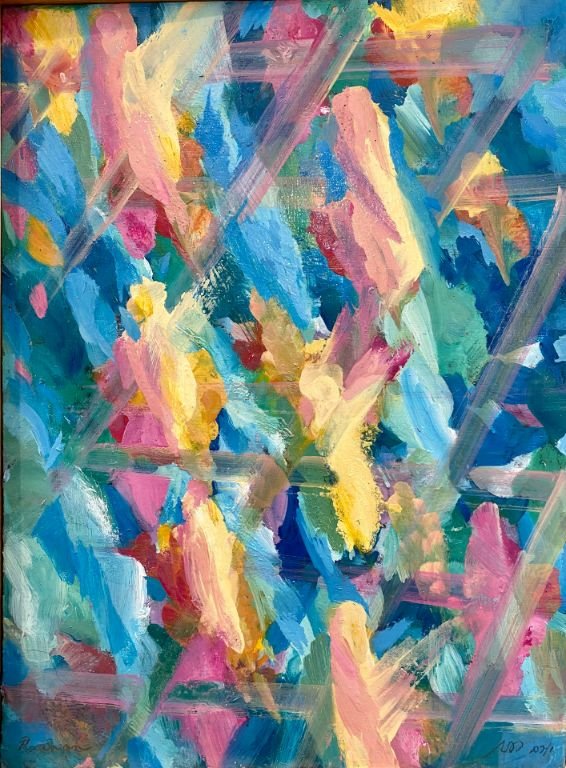Parshat Vayak’hel
Ascendance, oil on board, 40.5 x 30.2 cm
In parshat Vayak’hel, “cherubim with wings spread upwards shield the ark cover with their wings (Exodus 37:9). Cherubim are a kind of angel. These cherubim on either side of the Ark were made of solid gold, and yet were ascribed with supernatural qualities. The Talmud says that when Israel was dedicated to God the two Cherubim would face each other and when not they would turn away from one another. In Ezekiel’s vision of the Divine Chariot, the cherubim are described as complex creatures with multiple faces and wings. So much more can be written about them, and yet according to Maimonides, they were the second-lowest of the ten types of angels. This is reflected in Jewish liturgy where in the angelic chorus praising God (in the morning prayers and in kedusha), only seraphim and ophanim are mentioned but not cherubim. According to the medieval scholar Rabbenu Bachaya, we are commanded to believe in the existence of angels. This, he says, is the second most important principle in Judaism: the first is to believe in the existence of God. So, what are angels? “Rambam defines angel as the means by which a force exerts itself at a distance. There are all kinds of angels—spiritual, mental, emotional and physical. One way to think of them is as vibes—energetic influences that are invisible but yet still sensible” (Sara Yehudit Schneider). In the painting the “vibes”, the warm energetic influences exert their presence against the cool blues creating a dynamic vibration. Their strong and pale yellow presence tinged with red and rose are complimented with bold deep blues and lighter blue hues. The counter movement of diagonal and vertical lines creates suggestions of Magen Davids with ascending and descending energy. The Baal Shem tov teaches that our prayers, said with intention, actually nourish the angels.

